Delft faience large round dish camaieu blue Chinoiserie, ca. 1650.
Ø 35 cm
€ 650,00
Prijs incl. 6% BTW & Verzendingskosten
Meer informatie
Delft faience, tin-glazed earthenware, flourished between 1665 and 1715 and quickly conquered the world market. Most factories were founded between 1640 and 1660: De Distel, Deiaanse A, De Porceleyne Fles, De twee Astonnetjes, …. Both utility and decorative items were made. In the beginning, only blue decors were used under the glaze, usually so-called Chinoiseries. There are the heads of Chinese Wanli and transition porcelain with a division into compartments that radially taper to a central medallion. Also, the Kangxi style is introduced with new ornamental patterns such as flowering rocks, flowering shrubs and branches, as well as birds. The landscapes with long leeches and fools are also known. Shown is a large round deep dish with camaieu blue and white hand-painted decor of a so-called Chinoiserie. The pâte has a light yellow-brown tint. Very striking is the deep dark cobalt color under the glaze, on a white crackled background. Also remarkable for Delft is the complete filling of the various decor elements with cobalt. There is no obvious “tug”. The painting is rather primitive and is based on Chinese Wanli raak porcelain with a division of the edge into compartments. The arrangement of the latter with centrally directed blades of grass and diabolotype bands is also curious and unusual. In the center of the shelf a fisherman in a boat surrounded by waves and islands is painted with grass, the fisherman figure is completely filled with cobalt. This central decor is delineated towards the concave sculpted elevation with 2 concentric circle lines, with a wide grid band with cartouches, and externally from this the compartmentalized division begins. These too are filled with gridded islands of plants. The whole is covered with a transparent lead glaze, the so-called “qusts”. On the edge we see several flakes and edge wear where the pate color becomes visible. The back is also covered with white tin glaze in which several pinholes. There is no mark which is normal for this period. There are, however, visible. I think this dish dates from around 1650 or earlier. The manufacturer in question cannot be traced.
Condition: no cracks or tears or hairlines, but some loss of glaze and wear on the edge.
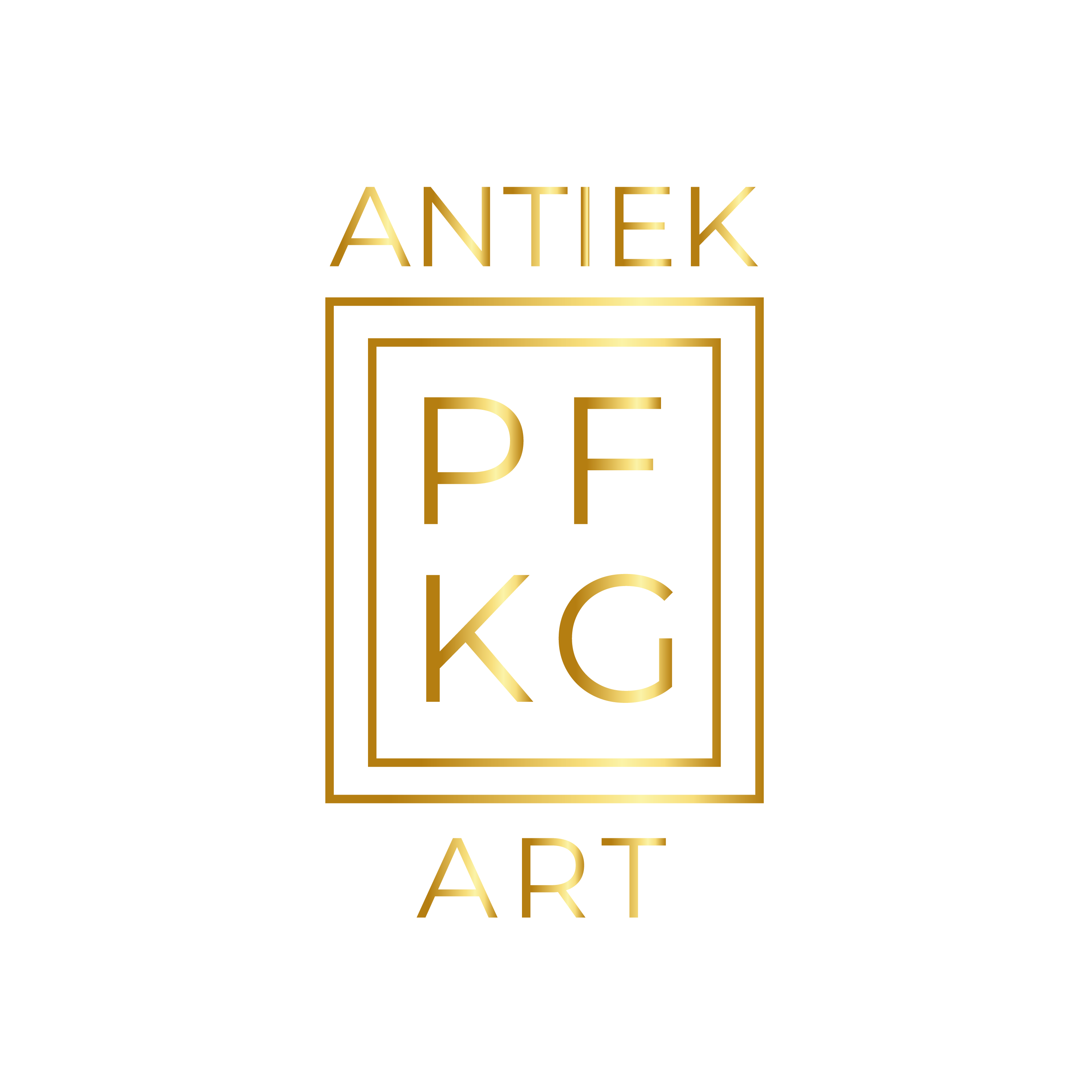


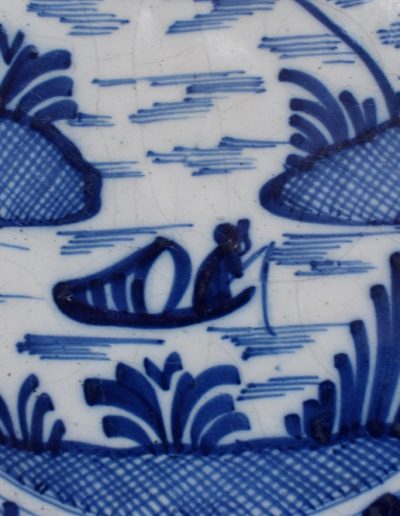
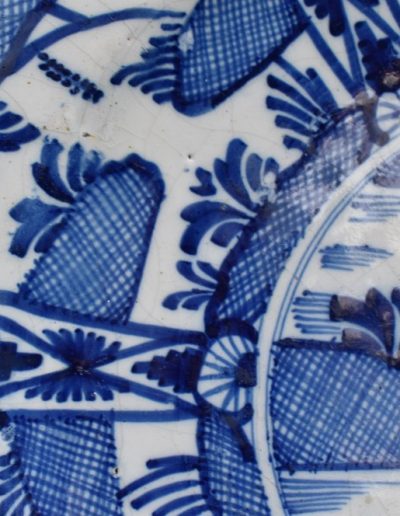
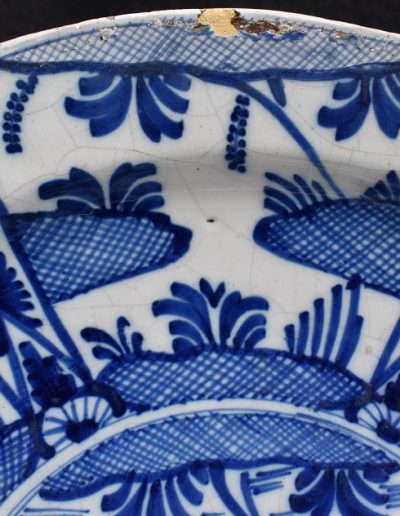
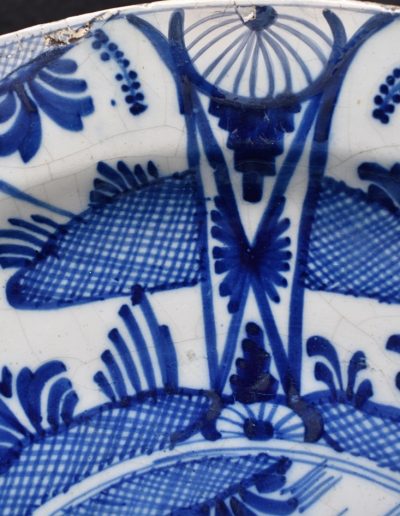

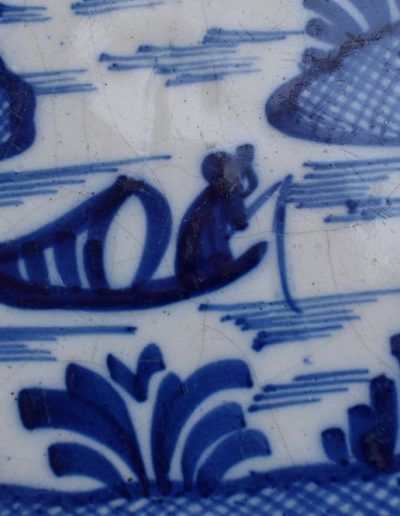
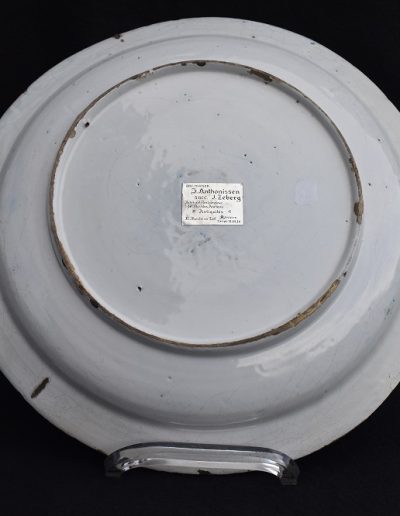
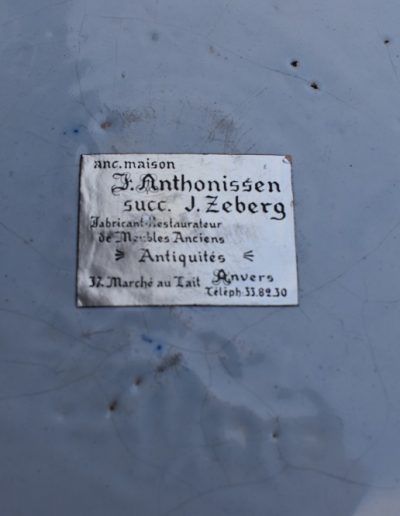
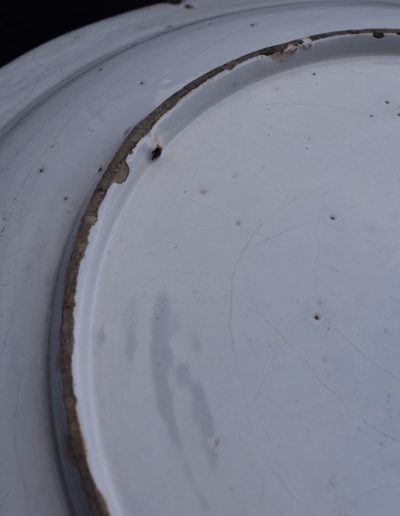
Reviews